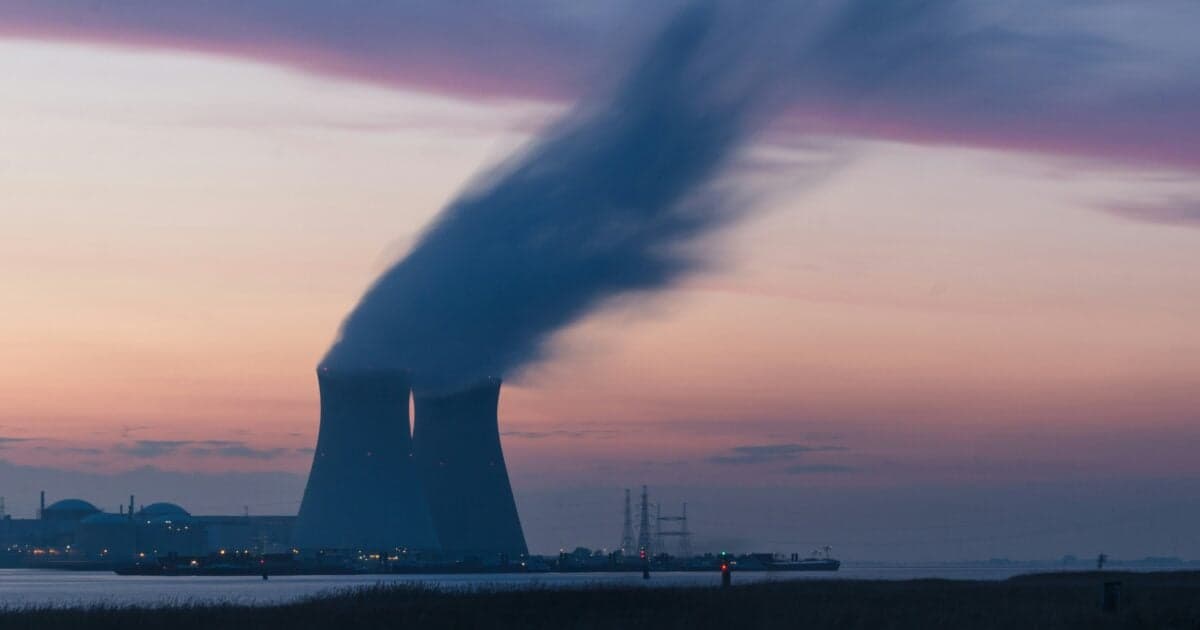AI Chip Giant Nvidia (NVDA) Just Invested in Nuclear Fusion... Have You?


This week, nuclear fusion startup Commonwealth Fusion Systems ("CFS") raised another $863 million...
The cap table reads like a who's who of investors...
AI chipmaker Nvidia (NVDA) invested in fusion for the first time through its venture arm NVentures. It was joined by other new investors, including Morgan Stanley's Counterpoint Global, Stanley Druckenmiller, and a consortium of a dozen Japanese companies.
This adds on top of the landmark fusion energy "preorder" deal from Alphabet (GOOGL) we detailed in July.
CFS has now raised nearly $3 billion since its founding... roughly one-third of all private fusion capital worldwide.
And step by step, fusion is moving closer to reality...
Accelerating Two Fusion Plants at Once
Commonwealth says the funds accelerate two tracks at once...
First, finishing SPARC, the net‑energy fusion demonstration machine in Devens, Massachusetts. CFS expects SPARC to be online in 2027.
SPARC's "secret sauce" is a materials breakthrough that dramatically reduces the size of the machine needed for the same performance. In 2021, the team at MIT and Commonwealth achieved a world‑record 20 tesla magnetic field using high‑temperature superconducting tape. That result reduces the risk of the magnet architecture needed for a compact, high‑field tokamak. Follow‑up tests, published in 2024, reinforced the readiness of these magnets for fusion energy.
SPARC is meant to refine the core technology for its successor, ARC, which will ultimately generate power for the commercial grid.
And second, the funds will also be used to continue to press forward on ARC, expected to be the first grid-scale fusion power plant in the world. As we detailed earlier this week, planning commissioners in Chesterfield County, Virginia unanimously approved ARC's permit, the first of several hurdles before the company can begin construction. We noted:
Virginia already contains the world's densest cluster of data centers. It's building more. And its electric grid is straining to meet the record demand. PJM, the regional grid operator, expects peak demand to rise even more sharply in the coming years.
No surprise, data centers are driving most of the increase.
Artificial intelligence ("AI") is pushing Big Tech to secure power that can scale up with AI's increasing compute demands. That is why Google "preordered" fusion power from ARC. And it is why Nvidia just wrote a check.
My colleague Whitney Tilson keeps returning to one, simple idea...
America needs an essentially limitless source of clean energy if AI is to fulfill its promise.
Why the Amazon Helios Moment Is Now
Whitney calls this broader fusion story the Amazon Helios project.
He describes it as a convergence of breakthroughs in magnets and materials... a flood of smart capital... and the massive power requirements of AI.
And the upside of Amazon Helios is massive, with a potential $40 trillion market...
According to Bloomberg Intelligence, if nuclear fusion is mastered, it could eventually spawn a $40 trillion global market for energy and related technologies... That far exceeds the expected markets for AI, quantum computing, EVs, and robotics combined.
In short, fusion could be an order of magnitude more economically powerful. Why? Because energy is the foundation for everything else. If you create a new AI software, you still need electricity to run it... If you build millions of EVs, they need power to charge.
Whitney's point is not that fusion power will be here tomorrow. And the scientific breakthroughs still required aren't easy.
The point for investors is that fusion power is finally necessary. Whitney put it this way:
In my opinion, no amount of oil, natural gas, coal, wind energy, or solar panels will provide enough electricity to support AI's needs.
To satisfy the near-limitless power demands of AI technology... We need a near-limitless power source. That's why I believe fusion is the key to unlocking AI's full potential.
And the world's biggest tech companies and venture capital funds are already buying in...
With the addition of Nvidia to CFS' investor list... the chipmaker isn't just "selling shovels" in the AI gold rush. It's now helping fund the type of electricity plant that will power the boom.
How Can Investors Get Fusion Exposure?
Commonwealth Fusion Systems is a private startup. It's not an opportunity a regular investor can access on the stock market – yet, at least.
CNBC calls it "a leader in the nascent space."
Unfortunately, this company is off-limits to most individual investors. Only accredited investors can take a stake in it.
But Tilson has found a "backdoor" into this company – one that can be accessed by any investor with $30 in his or her brokerage account. As he puts it:
As an investor in not one but two fusion startups, this company is perfectly positioned to potentially make big money when scientists finally solve fusion.
It's also prepared for the AI revolution.
It recently announced a plan to develop natural gas-fired power plants to provide U.S. data centers with the power equivalent to run over three million homes.
These plants will fast-track the AI boom by helping meet its high electricity needs.
What about its financials?
Well, that's where this firm really takes the cake. It's one of the most profitable companies in the world (emphasis added).
With the biggest company in the world investing in fusion – can you afford to ignore its potential? Watch Whitney's full Amazon Helios video presentation by clicking here.



